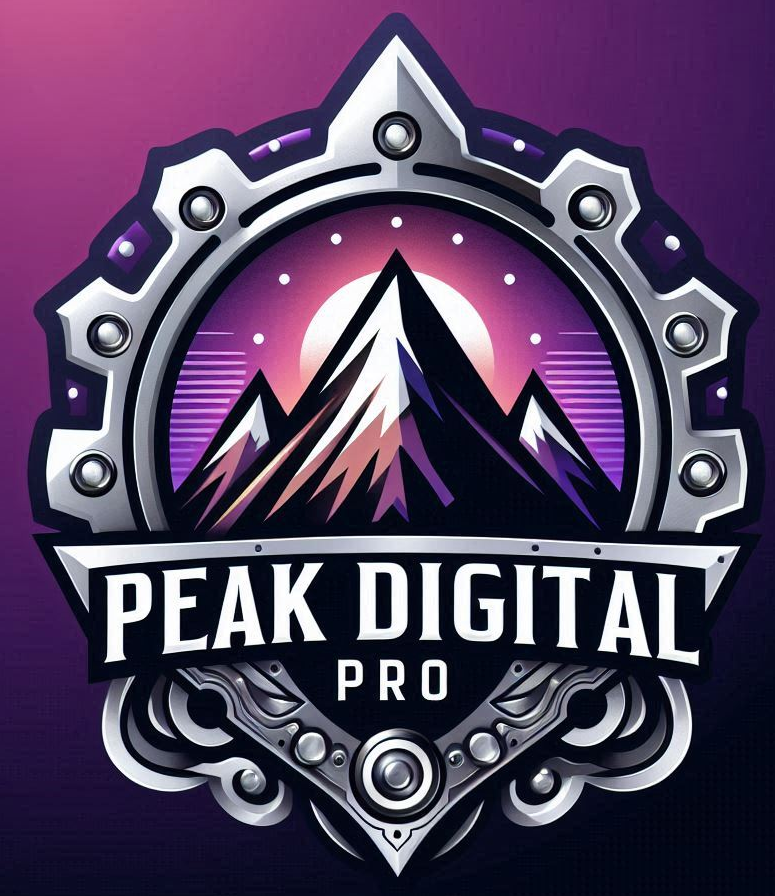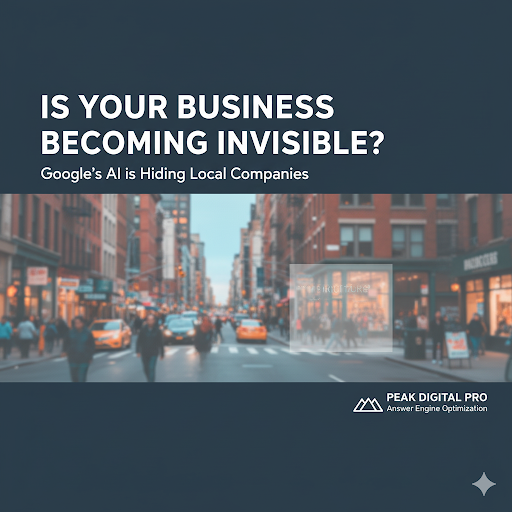Essential Content Optimization Tips for Business Owners
Content optimization sounds like it is just another box to check on your digital marketing plan. Yet, over 60 percent of all web traffic comes from search engine referrals . That means ignoring how you shape your content could quietly cost you the customers you want most. The real shock is that smart optimization does not end with keywords or rankings—it can turn your site into a powerful trust magnet that draws real people and keeps them coming back.
Table of Contents
Quick Summary
| Takeaway | Explanation |
|---|---|
| Optimize Content for SEO | Ensure content meets search engine algorithms for visibility. |
| Focus on User Intent | Use specific long-tail keywords that reflect actual user needs. |
| Engage with Local Audiences | Create localized content that addresses community interests and needs. |
| Measure Key Metrics | Track engagement and conversion rates linked to business goals. |
| Continuously Refine Content | Regularly audit and update content based on performance data for effectiveness. |
Why Content Optimization Matters for Your Business
In the competitive digital marketplace, content optimization represents a critical strategy for businesses seeking to establish a strong online presence and drive meaningful engagement. More than just creating content, optimization ensures your digital assets work strategically to attract, engage, and convert potential customers.
The Search Engine Performance Impact
Search engines are the primary gateway through which potential customers discover businesses online. Research from Coursera reveals that content optimization directly influences your website’s visibility and performance. By systematically updating and refining your content, businesses can significantly improve their search engine rankings, which translates to increased website traffic and potential customer interactions.
The statistics are compelling. According to the U.S. Department of Energy’s web analytics , over 60% of web traffic comes from search engine referrals. This underscores the immense importance of creating content that not only resonates with your target audience but also meets the technical requirements of search engine algorithms.
Building Authority and Credibility
Content optimization goes beyond technical mechanics. It’s about establishing your business as a thought leader in your industry. By consistently producing high-quality, relevant content that addresses your audience’s key questions and pain points, you build trust and credibility. Learn more about strategic SEO techniques that can help elevate your online presence.
Effective optimization means crafting content that is not just keyword-rich, but genuinely informative and valuable. Modern search engines prioritize content that demonstrates expertise, authoritativeness, and trustworthiness. This means your optimization efforts should focus on creating comprehensive, well-researched content that genuinely helps your target audience.
Maximizing Digital Marketing Investment
For business owners, content optimization represents a cost-effective marketing strategy. Unlike paid advertising that requires continuous financial investment, well-optimized content can continue generating organic traffic and leads over extended periods. By investing time and resources into understanding your audience’s search behaviors and creating targeted, high-quality content, you can achieve sustainable digital marketing results.
Optimization is an ongoing process. The digital landscape continually evolves, with search engine algorithms becoming increasingly sophisticated. Businesses that remain adaptable, continuously monitor their content’s performance, and make data-driven refinements will maintain a competitive edge in their respective markets.
Ultimately, content optimization is not just a technical exercise but a strategic approach to digital marketing. It bridges the gap between your business’s expertise and your potential customers’ informational needs, creating a powerful pathway for growth and engagement.
Proven Content Optimization Tips for Better Engagement
In the dynamic world of digital marketing, content optimization requires strategic approaches that go beyond basic keyword placement. Business owners must implement sophisticated techniques that not only attract search engines but also genuinely engage their target audience.
Strategic Keyword Research and Implementation
Effective content optimization begins with comprehensive keyword research. Discover advanced content marketing techniques that can transform your digital strategy. According to research from the University of Washington , utilizing tools like Google Analytics and Google Search Console is crucial for identifying content opportunities and understanding user search behaviors.
The key is not just finding popular keywords but understanding user intent. This means selecting keywords that reflect genuine user questions and needs. Long-tail keywords that are more specific can often drive more targeted traffic and demonstrate higher engagement rates. For instance, instead of using a generic term like “digital marketing,” focus on more specific phrases like “affordable digital marketing strategies for small businesses.”
Optimizing On-Page Elements for Maximum Impact
California State University Stanislaus highlights four critical areas for content optimization: Title SEO Tag, Meta Description, Headings, and Internal Linking. Each of these elements plays a significant role in improving both search engine rankings and user experience.
Title tags should be concise, compelling, and include primary keywords. Meta descriptions need to be engaging summaries that entice users to click. Headings should be structured hierarchically and include relevant keywords. Internal linking helps search engines understand content relationships and keeps users navigating through your website.
Creating High-Value, User-Focused Content
Beyond technical optimization, the core of successful content strategy is delivering genuine value to your audience. This means creating content that answers specific questions, solves problems, and provides actionable insights. Content should be structured for readability with clear sections, bullet points, and concise paragraphs.
Consider diversifying your content formats. While written articles are important, incorporating videos, infographics, podcasts, and interactive elements can significantly boost user engagement. Each piece of content should have a clear purpose and provide unique value that distinguishes it from competitors.
Regular content audits are essential. Periodically review your existing content to update outdated information, improve readability, and ensure alignment with current search engine algorithms. This ongoing refinement process helps maintain the relevance and effectiveness of your digital content strategy.
To help business owners quickly identify the differences and focus areas for content optimization, here is a summary table comparing key aspects of On-Page Optimization and User-Focused Content discussed above:
| Aspect | On-Page Optimization | User-Focused Content |
|---|---|---|
| Main Focus | Technical elements (title tags, meta, headings, links) | Delivering value and addressing audience needs |
| Primary Goal | Improve search engine visibility | Increase engagement and build trust |
| Key Actions | Optimize titles, meta descriptions, headings, internal links | Create actionable, relevant, and informative content |
| Metrics To Track | Search rankings, click-through rate (CTR) | Time on page, social shares, user feedback |
| Frequency of Updates | As algorithms/design change, and during audits | Regularly to remain relevant and accurate |
By implementing these proven content optimization tips, business owners can create a robust digital presence that not only ranks well in search results but also genuinely connects with their target audience. The goal is to transform content from a mere marketing tool into a powerful mechanism for building trust, demonstrating expertise, and driving meaningful business growth.
Local SEO Content Strategies for Colorado Businesses
Local SEO represents a critical digital marketing strategy for Colorado businesses seeking to establish a strong regional presence and connect directly with their target audience. Unlike generic SEO approaches, local optimization focuses on capturing the unique characteristics and search behaviors of customers within specific geographic areas.
Precision in Local Business Listings
Discover how to boost your local online visibility with targeted strategies. According to the Colorado Office of Information Technology , maintaining accurate and consistent business information across digital platforms is fundamental to successful local SEO. This means ensuring your Name, Address, and Phone Number (NAP) are identical across Google My Business, Yelp, social media profiles, and other online directories.
Consistent NAP information signals credibility to search engines and helps potential customers find your business more easily. Business owners should conduct regular audits of their online listings, updating information promptly and addressing any discrepancies. Local citations from reputable Colorado business directories can significantly enhance your local search rankings.

Content Localization and Community Engagement
Effective local SEO goes beyond technical optimization. Creating content that resonates with the Colorado community is crucial. This means developing blog posts, articles, and web pages that speak directly to local interests, challenges, and experiences. For example, a Colorado Springs business might create content about local events, regional business trends, or community-specific challenges.
Geographic keyword integration is another powerful strategy. Instead of generic terms, use location-specific phrases like “Colorado Springs small business marketing” or “Front Range digital marketing services.” These targeted keywords help search engines understand your local relevance and improve your visibility for region-specific searches.
Leveraging Local Digital Platforms and Reviews
Customer reviews play a pivotal role in local SEO performance. Encourage satisfied customers to leave detailed, genuine reviews on platforms like Google My Business, Yelp, and industry-specific review sites. Respond to these reviews professionally, demonstrating your commitment to customer satisfaction and community engagement.
Multimedia content can further enhance local SEO efforts. Create location-specific videos, image galleries featuring local landmarks, or infographics about Colorado business trends. These content types not only improve search engine optimization but also create a more engaging user experience that reflects your local identity.
Local businesses must also optimize their websites for mobile devices, ensuring fast loading times and easy navigation. With increasing mobile search usage, a mobile-friendly website is no longer optional but essential for capturing local search traffic.
Below is a checklist table summarizing key components of a robust local SEO strategy, allowing business owners to quickly evaluate their implementation coverage:
| Local SEO Element | Implementation Status |
|---|---|
| Consistent NAP Across Directories | [ ] |
| Local Citation Building | [ ] |
| Geographic Keyword Integration | [ ] |
| Community-Focused Content | [ ] |
| Customer Review Management | [ ] |
| Multimedia Local Content | [ ] |
| Mobile-Friendly Website | [ ] |
| Regular Audit of Listings | [ ] |
By implementing these strategic local SEO approaches, Colorado businesses can transform their digital presence from generic to genuinely localized. The goal is not just improved search rankings, but creating meaningful digital connections that reflect the unique spirit and needs of the Colorado business community.
How to Measure and Improve Your Content Performance
Measuring and improving content performance is a critical aspect of digital marketing that transforms raw data into actionable insights. Business owners must develop a comprehensive approach to understanding how their content resonates with audiences and drives business objectives.
Defining Key Performance Indicators
Explore advanced content marketing ROI strategies to elevate your digital presence. According to Purdue University’s Daniels School of Business , successful content measurement begins with aligning metrics directly to business goals. This means moving beyond surface-level metrics like page views to more meaningful indicators such as engagement rate, conversion rate, and customer acquisition cost.
Effective key performance indicators (KPIs) should be specific, measurable, and directly tied to your business objectives. For instance, a B2B company might focus on metrics like lead generation, time spent on page, and content-driven revenue, while an e-commerce business might prioritize conversion rates and average order value attributed to content marketing efforts.
Advanced Performance Tracking Techniques
Mozilla Developer Network offers insights into the critical concept of perceived performance, which goes beyond traditional metrics. This approach considers how users actually experience your content, focusing on factors like loading speed, interactivity, and overall user experience.
Key performance tracking techniques include:
- Engagement Metrics : Analyze time on page, bounce rate, and social shares
- Conversion Tracking : Monitor how content drives specific business actions
- User Experience Indicators : Assess page load times, mobile responsiveness, and navigation ease
Utilize tools like Google Analytics, heat mapping software, and advanced content analytics platforms to gather comprehensive performance data. These tools provide deep insights into how users interact with your content, allowing for more targeted optimization strategies.
Continuous Content Optimization
Performance measurement is not a one-time activity but an ongoing process of refinement. Regularly audit your content to identify top-performing pieces and understand what makes them successful. This might involve analyzing common characteristics of high-performing content, such as specific topics, writing styles, or multimedia elements.
Implement a systematic approach to content improvement:
- Conduct quarterly content performance reviews
- A/B test different content formats and approaches
- Gather and incorporate user feedback
- Update and repurpose high-performing content
Remember that content optimization is an iterative process. What works today might not work tomorrow, so maintaining flexibility and a data-driven approach is crucial. Pay attention to emerging trends, changes in search engine algorithms, and shifts in user behavior.
Ultimately, measuring and improving content performance is about creating a continuous feedback loop. By systematically tracking performance, understanding user behavior, and making data-driven improvements, businesses can develop more effective content strategies that truly resonate with their target audience and drive meaningful business results.

Frequently Asked Questions
What is content optimization?
Content optimization is the process of improving digital content to enhance its visibility, engagement, and effectiveness on search engines. It involves strategies like keyword research, on-page elements enhancement, and user-focused content creation.
Why is content optimization important for businesses?
Content optimization is crucial because it increases search engine visibility, establishes authority and credibility, maximizes marketing investments, and drives sustainable traffic to your website, ultimately leading to more conversions and customer retention.
How can I conduct effective keyword research?
Effective keyword research can be done by utilizing tools like Google Analytics and Google Search Console to identify keywords that reflect user intent. Focus on long-tail keywords that are specific to your audience’s needs and questions for better engagement.
What are key performance indicators (KPIs) for measuring content effectiveness?
Key performance indicators (KPIs) for content effectiveness include engagement rates (like time on page and bounce rate), conversion rates, customer acquisition costs, and metrics directly tied to business objectives to assess the impact of your content strategy.
Ready to Transform Your Content Into Real Business Growth?
Struggling to turn your content into true results? The article above highlighted pain points like low search visibility, inconsistent user engagement, and the challenge of keeping up with the latest search engine changes. You learned that content optimization is more than packed keywords—it is about building authority, earning local trust, and driving action. Now imagine what your business could achieve with a partner who brings these proven strategies to life.

Get lasting results today with Peak Digital Pro. Let us craft and optimize your website content using advanced SEO tactics and AI-driven marketing tools.
- Boost your local search rankings in Colorado Springs
- Convert more visitors into loyal customers
- Expand your digital footprint with measurable tactics
Do not let outdated content or missed optimization hold your business back. Visit our main site to start your transformation now and unlock the real potential of your digital presence.
Recommended
-
[
Best On-Page SEO Techniques for US Business Owners in 2025
]( https://peakdigital.pro/2025/07/12/on-page-seo-techniques-for-us-business-owners-2025 )
-
[
What Is SEO? Simple Guide for US & Colorado Businesses 2025
]( https://peakdigital.pro/2025/07/16/what-is-seo-guide-for-us-and-colorado-businesses )
-
[
How to Improve Website Rankings: 2025 Guide for U.S. Businesses
]( https://peakdigital.pro/2025/07/16/how-to-improve-website-rankings-2025-guide-us-businesses )
-
[
Optimizing Images for SEO: A 2025 Guide for U.S. Businesses
]( https://peakdigital.pro/2025/07/27/optimizing-images-for-seo-guide-us-businesses-2025 )







